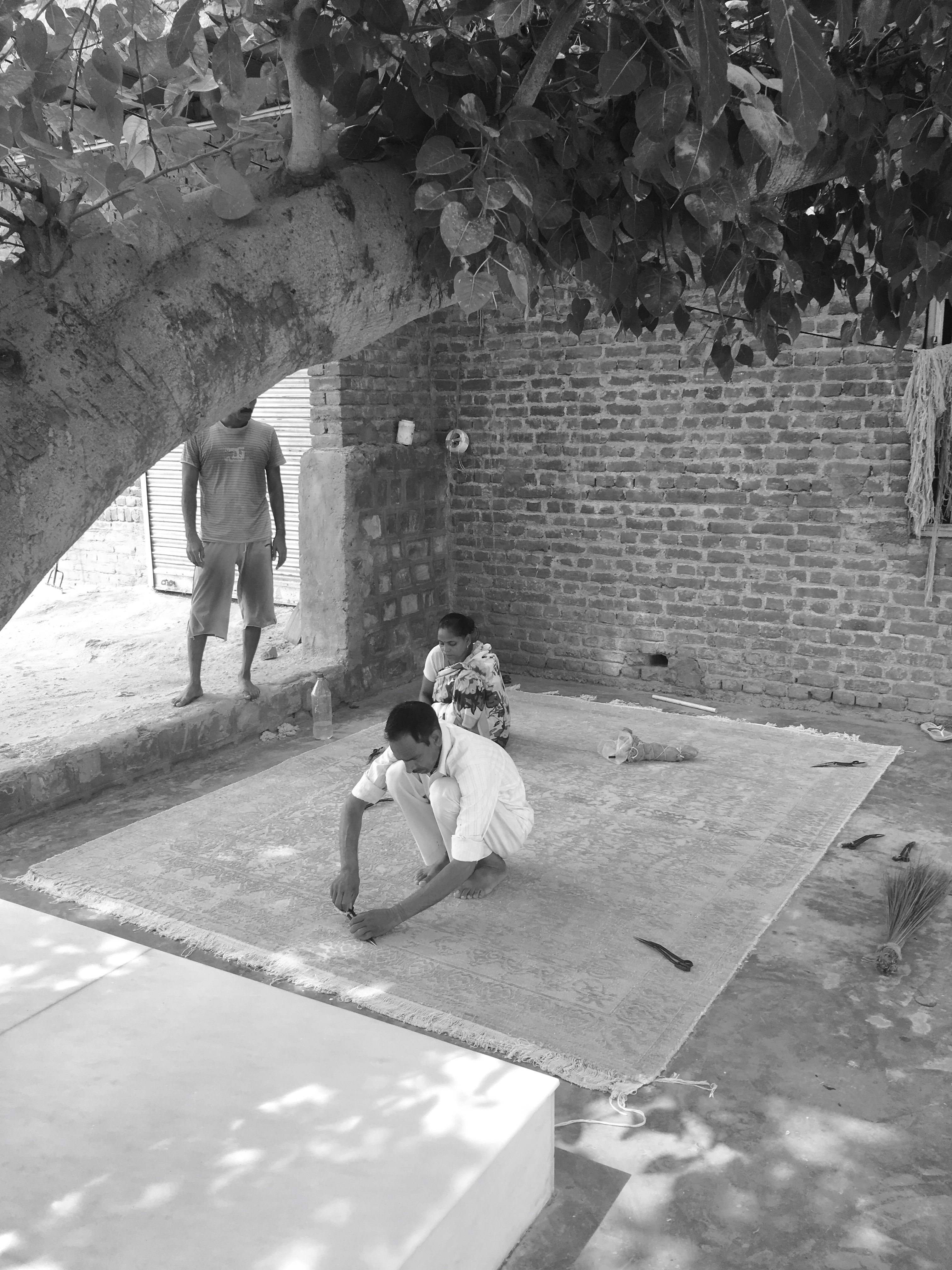For thousands of years, skilled Persian weavers have painstakingly handwoven unique rugs, specific in type and design to the areas that they live.
Persian weavers from the famous weaving cities of Kashan, Tabriz, Qum and many others have maintained their excellent standards by staying true to inherited and proven methods of production. City weavers only use natural compositions and simple standard tools. Shortcuts do not exist.
For this blog, I have outlined the typical methods used by traditional city workshop weavers to create the most refined of all Persian rugs:
- The first step to creating a Persian rug is establishing a design. In most cases, the overall design, including motifs and colours, are influenced by the weaver's culture and the period when the rug is woven. The coloured designs are hand drawn on gridded paper for use as a template.
- Once design and palette have been established, weavers gather the composition materials. High-quality, hand spun and dyed wool yarn, and silk thread are available in the trading bazaars of most Persian weaving cities. More than one weaver can work on a large city rug, and in this case, multiple bundles of repeat coloured yarn are hung across the top of the loom for easy access of weavers. For some exclusive Persian rugs with a detailed design and varied colour palette, more than 30 different yarn colours are sourced.
- Persian rugs are woven on timber looms - the size of the loom will limit the dimension of the rug created. Most city rugs are woven on a vertical loom. The loom is prepared for weaving by tensely tieing vertical warp chords (usually made of cotton but sometimes wool or silk) from the top to the bottom of the loom.
- The most demanding step of carpet weaving is the knotting itself. Knots are tied in horizontal rows, from bottom-to-top in either a symmetrical or asymmetrical knotting technique. The 'print' of the rug is forged as the weaver knots different coloured wool and silk according to the design. After every single knot, the weave cuts the yarn longer than the desired pile length using a hook like an instrument called a 'hook'.
- Once each line of knots is complete (or sometimes more one row), the weaver adds weft chords to lock in the knots. A heavy comb-like weaving instrument called a 'tupitsa' is used to beat the weft to the knot which results in a sturdy foundation. Experienced weavers knot with incredible pace and accuracy, yet still, most city rugs take around one month per square metre to knot, while a grand Pure Silk Qum rug can take more than 12 months!
- The final stage in production is the finishing. Once knotting has is complete a weaver cuts the rug off the loom. The warp chords once attached to the top and bottom of the loom, extend from the rug making the fringes. The weavers then tie and secure the edges. At this point, the rug has a hairy and distorted appearance, but once hand shaving evens the excess pile, the complete uniqueness, balance and intricacy of the finished rug can be admired. A deep wash is done using expert methods and natural cleaners, preparing the piece for sale in the local bazaar.
I hope this provides some appreciation of the demanding and highly skilled work that goes into weaving a Persian rug. A transformative part of my rug career was my first overseas buying trip when I was able to see first hand the incredible skills and passion possessed by every weaver.

Skilled weavers during the finishing stage. Taken on our most recent buying trip of Jaipur.

